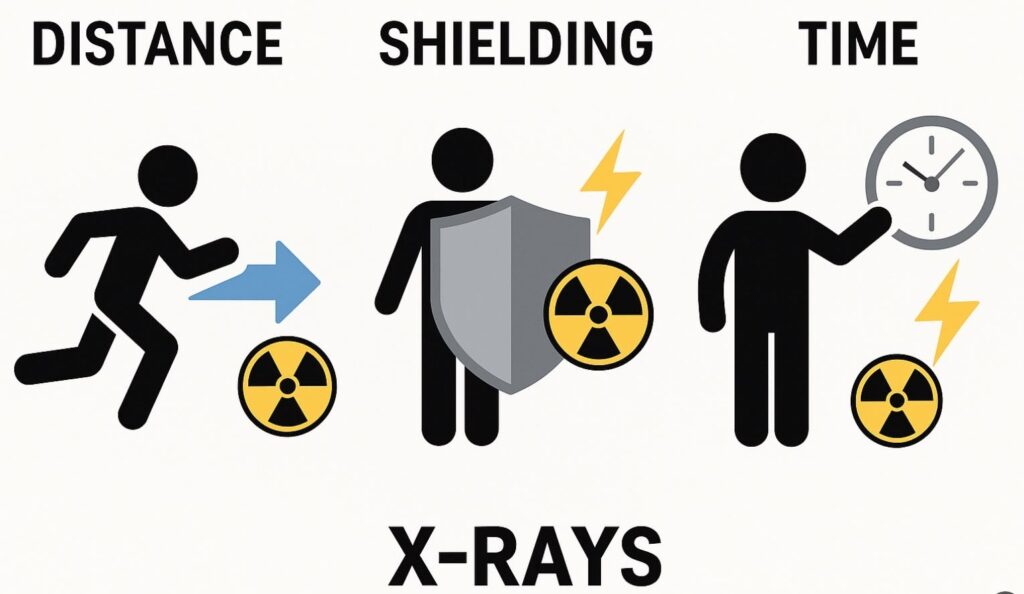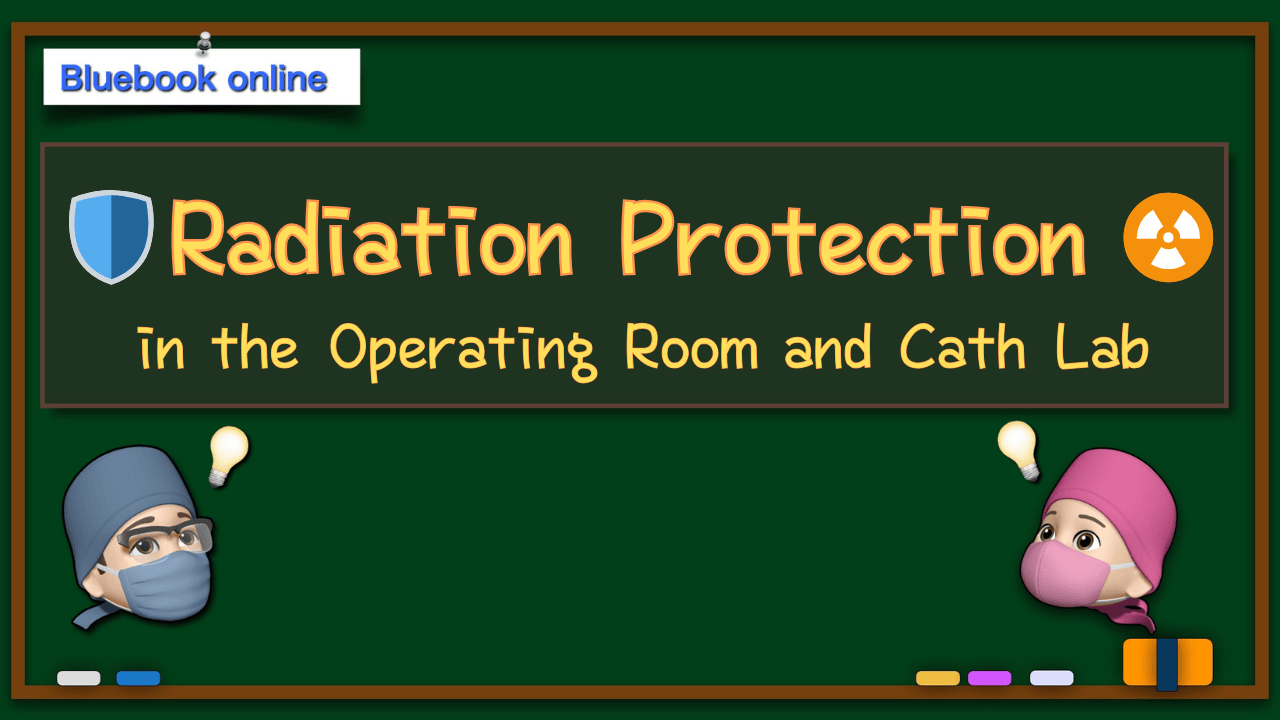👉👉 🇺🇸 All Posts 🇬🇧 / 🇯🇵 記事一覧 🇯🇵 👈👈
🔷 Introduction
Healthcare professionals working in operating rooms, catheterization labs, and radiology departments are exposed to radiation on a daily basis.
Without proper protective equipment—and correct use of that equipment—we may carry unnecessary health risks that could otherwise be avoided.
Let’s take a closer look at radiation protection, focusing on general X-ray sources such as radiographs, CT scans, and fluoroscopy.
3️⃣ The Three Principles of Radiation Protection

🔷 Distance (Step away! 🏃♀️💨⚡️☢️)
This is the most basic rule. The farther you are from the radiation source, the lower the exposure.
It’s just like standing near a high-pressure water hose—the spray is strong up close but weakens as you move farther away. Radiation exposure follows the inverse square law:
If you double your distance from the source, exposure is reduced to one-quarter. For example, a person standing 2 meters away (Person A) receives only 1/4 the exposure of someone standing 1 meter away (Person B).
In the clinical setting, nurses and technologists often need to stay close to the patient. But even taking a single step back can significantly reduce exposure.
Think of the principles as a hierarchy: Distance → Shielding → Time.
🔷 Shielding (Hide behind protection! 🙍♂️🛡️⚡️☢️)
When danger is unavoidable, hide behind protective barriers. Just as a thick shield or high-quality material can stop a bullet, proper barriers can block radiation—it’s all energy, after all.
In radiology rooms, cath labs, and ORs, the walls, windows, and shields often contain lead. These barriers provide nearly 100% protection.
However, personal protective equipment (PPE) is not perfect. Effectiveness depends on the material, condition, and how it is worn. That’s why proper use and regular inspection are so important.
🔷 Time (Keep it short ➡️🫸⏰🫷⬅️)
Limit the amount of time you’re exposed to radiation.
For routine X-rays and CT scans, exposure time is fixed. But in fluoroscopy-guided procedures or catheter interventions, unnecessary activation of the fluoroscopy pedal should be avoided.
Trainees often get so focused on the procedure that supervisors have to remind them:
“Stop using fluoroscopy unnecessarily!”
🛡️ Personal Protective Equipment (Your Armor)
Beyond walls and shields, personal protective equipment is essential for protecting healthcare workers.
🔷 Lead aprons (apron type, coat type) 🧥
The most common protective gear is the lead apron.
There are apron-style and coat-style designs. In simple X-ray exams, these are often the only protection used. But beware of apron-type designs:
They leave the back unprotected—like a cartoon character in rags (“Bimbocchama” style 😅). If you turn your back to the source, you’ll be fully exposed.
Both types are effective if worn properly. But lead aprons deteriorate over time, especially if folded or used for many years. Hospitals should perform regular inspections (often using X-rays to check for cracks or defects) and replace damaged aprons. (Unfortunately, some facilities still use worn-out aprons 😱).
🔷 Thyroid shields
Often overlooked, thyroid shields are crucial.
While staff usually step out of the room during routine CT or X-ray imaging, in cath labs and interventional procedures, physicians, nurses, and technologists stay inside and should all wear thyroid protection.
The thyroid is highly radiosensitive, particularly in younger individuals. Interventional physicians often purchase their own thyroid shields, but among other staff this practice is not always consistent. Everyone should wear one.
🔷 Goggles 🥽
Don’t forget to protect your eyes!
Radiation-induced cataracts are a deterministic effect (a guaranteed outcome once a threshold dose is exceeded).
The lens of the eye is highly sensitive, and occupational exposure limits have recently been tightened internationally.
In other words: Eye protection is no longer optional—it’s mandatory.
📝 Summary
- Radiation is invisible and odorless, making it easy to underestimate. But exposure accumulates and may cause long-term health problems.
- By practicing the three principles—Distance, Shielding, Time—and correctly using PPE such as lead aprons, thyroid shields, and goggles, we can dramatically reduce unnecessary risk.
- Don’t fall into the trap of thinking, “I’m still young, so I’ll be fine.”
- Radiation effects accumulate like money in a bank account—bit by bit, year after year.
- Protect yourself with the right knowledge and the right armor ☢️🛡️✨

コメントを投稿するにはログインしてください。